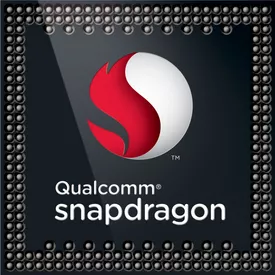MediaTek Dimensity 9000 Plus vs Qualcomm Snapdragon 675
SOURCE ARTICLES
Dimensity 9000 Plus vs Dimensity 9000: tests and benchmarks
nanoreview.net
The Dimensity 9000 Plus has advantages over the Dimensity 9000, including a higher GPU frequency, better AnTuTu scores, and a higher CPU clock speed. In benchmarks, the Dimensity 9000 Plus outperforms the Dimensity 9000 in both AnTuTu and Geekbench tests. The specifications of both chips are similar, with the Dimensity 9000 Plus having a slightly higher GPU frequency and more efficient memory. Overall, the Dimensity 9000 Plus is the better choice.
Dimensity 9000 vs. Snapdragon 8 Gen 1 Special Review: Performance/Energy Efficiency & more
www.gizchina.com
The Dimensity 9000 outperforms the Snapdragon 8 Gen 1 in terms of CPU performance, with higher scores in Geekbench 5. The GPU performance is slightly inferior to the Snapdragon 8 Gen 1, but the gaming performance is similar in actual games. The Dimensity 9000 also has better temperature control, running cooler than the Snapdragon 8 Gen 1 during gaming. In terms of power consumption and energy efficiency, the Dimensity 9000 has a lower power consumption and higher energy efficiency ratio. Overall, the Dimensity 9000 is a clear winner in performance and energy efficiency.
MediaTek Dimensity 9000 Plus review
versus.com
The MediaTek Dimensity 9000 Plus has a CPU speed of 3.2 GHz, 2.85 GHz, and 1.8 GHz. It uses big.LITTLE technology to switch between powerful and less powerful cores for performance and battery life optimization. It also has Heterogeneous Multi-Processing for utilizing all cores or a single core for different tasks. The L2 and L3 cache sizes are unknown, but larger caches result in faster performance. The clock multiplier controls the CPU speed.
Benchmark showdown: Snapdragon 8 Plus Gen 1 vs Dimensity 9000 Plus
The review compares the Snapdragon 8 Plus Gen 1 and Dimensity 9000 Plus chips. The Dimensity 9000 Plus performs better in CPU-heavy workloads, while the Snapdragon 8 Plus Gen 1 has a slight advantage in graphics performance. MediaTek's chip has a larger cache and performs well in multi-threaded workloads. Both chips have good sustained performance, but the Dimensity 9000 Plus performs better in power consumption optimization. The Snapdragon's Adreno GPU is more future-proof. Overall, both chips offer high performance for demanding users.
Snapdragon 8 Gen 2 vs MediaTek Dimensity 9000+: Qualcomm is the undisputed GPU king
The Snapdragon 8 Gen 2 outperforms the MediaTek Dimensity 9000+ in terms of GPU performance, making Qualcomm the undisputed GPU king. However, the Dimensity 9000+ remains competitive in CPU performance. Qualcomm also excels in AI capabilities, while MediaTek struggles to keep up. In terms of power consumption, the Snapdragon 8 Gen 2 has a lower maximum wattage. Overall, Qualcomm's chipset is the best Android SoC currently available, with MediaTek having a tough challenge ahead to catch up.
MediaTek Dimensity 9000+ Processor - Benchmarks and Specs
The MediaTek Dimensity 9000+ processor has been benchmarked and its specs have been revealed. It performs well in average benchmarks and has a range of features.
Qualcomm Snapdragon 8 Plus Gen 1 vs MediaTek Dimensity 9000 Plus: Neck and neck in every aspect
The review compares the MediaTek Dimensity 9000 Plus and Qualcomm Snapdragon 8 Plus Gen 1 chipsets. The Dimensity 9000 Plus has higher clock speeds and a larger system-level cache. It performs well in CPU-centric computational tasks but falls behind in GPU performance compared to the Snapdragon 8 Plus Gen 1. Both chipsets drain battery quickly and have similar power efficiency. The Snapdragon 8 Plus Gen 1 performs better in CPU throttling tests. In terms of graphics, the Snapdragon's Adreno GPU outperforms the Mali GPU in the Dimensity 9000 Plus. Overall, the Snapdragon 8 Plus Gen 1 is considered the better chipset.
Qualcomm Snapdragon 675 vs Qualcomm Snapdragon 680 4G: What is the difference?
The Qualcomm Snapdragon 675 and Snapdragon 680 4G are both processors with different features. The Snapdragon 675 has an unknown turbo clock speed, L2 cache, L1 cache, and clock multiplier. It also has an unknown L3 cache. The Snapdragon 680 4G also has unknown values for turbo clock speed, L2 cache, L1 cache, and clock multiplier. It also has an unknown L3 cache. Both processors have features that can improve performance and battery life, such as big.LITTLE technology and Heterogeneous Multi-Processing. A larger L2 and L3 cache can result in faster performance.
Snapdragon 675 Review and Benchmarks
The Snapdragon 675 is a powerful SOC manufactured using an 11nm process. It features the Kryo 460 CPU architecture, with 2 high-performance Cortex-A76 cores and 6 power-efficient Cortex-A55 cores. The Adreno 612 GPU provides good gaming performance. The SOC supports a maximum display resolution of FHD+ and has a dual-channel LPDDR4x RAM configuration. It also has the Qualcomm X12 LTE modem, Bluetooth 5.0, and supports Qualcomm Quickcharge 4+. The Snapdragon 675 outperforms the Snapdragon 636 and 660, but falls behind the Snapdragon 710 and 845 in terms of GPU and power efficiency. It is superior to the Helio P70 and Kirin 710. Some smartphones that use the Snapdragon 675 include the Redmi Note 7 Pro, Vivo V15 Pro, and Samsung Galaxy A70.
Qualcomm Snapdragon 675 SoC - Benchmarks and Specs
The Qualcomm Snapdragon 675 is a mid-range ARM-based SoC found in Android tablets and smartphones. It features 8 Kryo 460 cores divided into two clusters, with two fast cores based on the ARM Cortex-A76 design and a power-saving efficiency cluster based on smaller ARM Cortex-A55 cores. It also integrates a lower mid-range Adreno 612 GPU, a X12 LTE Modem, 802.11ac Wave 2 WLAN modem, Bluetooth 5.0 radio, satellite positioning, and a video engine. In benchmarks, it outperforms the Snapdragon 670 but is still surpassed by high-end SoCs like the Snapdragon 855. The Snapdragon 675 is produced in the 11nm LPP process, which increases performance by 15% and decreases chip size by 10%.
Qualcomm Snapdragon 675: specs and benchmarks
The Qualcomm Snapdragon 675 is an 8-core chipset manufactured using 11-nanometer process technology. It has 2 cores Kryo 460 Gold (Cortex-A76) at 2000 MHz and 6 cores Kryo 460 Silver (Cortex-A55) at 1700 MHz. In benchmarks, it scored 315154 in AnTuTu, 405 in 3DMark Wild Life Performance, and had a GeekBench score of 405. The GPU is Adreno 612 with a frequency of 845 MHz and 96 shading units. It supports LPDDR4X memory with a frequency of 1866 MHz and has a max display resolution of 2520 x 1080. The Snapdragon 675 has a Hexagon 685 neural processor and supports 4G LTE Cat. 13. It has a download speed of up to 600 Mbps and upload speed of up to 150 Mbps.
+ 8
AI COMPARISON
Comparison Table
| Feature | MediaTek Dimensity 9000 Plus | Qualcomm Snapdragon 675 |
|---|---|---|
| Clock Speed | 1 x 3.2 GHz, 3 x 2.85 GHz, 4 x 1.8 GHz | 2 x 2.0 GHz, 6 x 1.7 GHz |
| Total Clock Speed | 18.95 GHz | 14.2 GHz |
| RAM Speed | 3750 MHz | 1866 MHz |
| GPU Frequency | 850 MHz | 845 MHz |
| Semiconductor Size | 4 nm | 11 nm |
| Download Speed | 7000 Mbits/s | 600 Mbits/s |
| Upload Speed | 2500 Mbits/s | 150 Mbits/s |
| Max Memory Size | 24 GB | 8 GB |
| Max Memory Bandwidth | 60 GB/s | 14.9 GB/s |
| CPU Threads | 8 | 8 |
| Internal Graphics | Yes | Yes |
| 5G Support | Yes | No |
| DirectX Version | 12 | 12 |
| OpenCL Version | 2 | 2 |
| Memory Type | DDR5 | DDR4 |
| Memory Channels | 4 | 2 |
Summary
The MediaTek Dimensity 9000 Plus significantly outperforms the Qualcomm Snapdragon 675 in most technical aspects. The Dimensity 9000 Plus boasts a much higher total clock speed and RAM speed, indicating superior processing and multitasking capabilities. It also has a notable edge in GPU frequency, semiconductor technology (4 nm vs 11 nm), and memory specifications, supporting DDR5 with a maximum size of 24 GB compared to the Snapdragon's 8 GB on DDR4.
Connectivity is another strong point for the Dimensity 9000 Plus with its support for 5G and higher data transfer speeds (7000 Mbits/s download and 2500 Mbits/s upload), vastly surpassing the Snapdragon 675. Both processors support DirectX 12 and OpenCL 2, indicating modern graphical capabilities, although MediaTek provides a more robust overall performance.
Recommendations
For users prioritizing high performance, future-proofing, and advanced connectivity (especially 5G), the MediaTek Dimensity 9000 Plus is the superior choice. It's well-suited for heavy gaming, intensive multitasking, and use in high-end smartphones where cutting-edge performance is crucial.
On the other hand, the Qualcomm Snapdragon 675 is more appropriate for mid-range devices where cost is a concern but decent performance is still needed. It's suitable for everyday tasks and moderate gaming, offering good power efficiency and performance for its price point. However, it lacks 5G support, making it less future-proof.
PRICES
ASK AI
BestVs.ai
Hello, I'm your AI shopping assistant. How can I help you?
AI can make mistakes. Consider checking important information.


